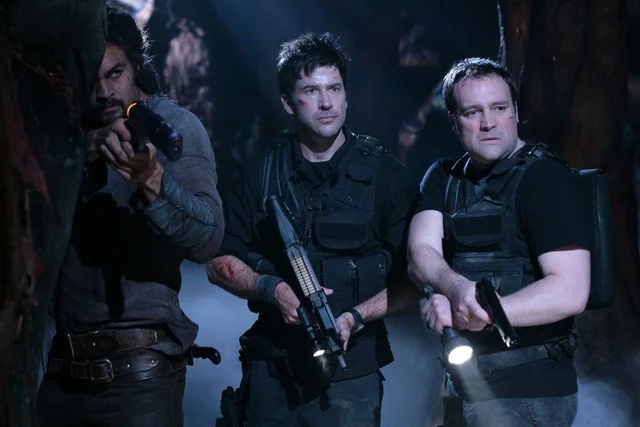Virtual reality film ‘Tidal Traces’ transports viewers into an ocean dance
Tidal Traces is many things: a stop-gap solution for winter-weary Vancouverites yearning for a hit of sun, surf, and sand; a unique opportunity for non-dancers to immerse themselves in a choreographic work; a stunning collaboration between a filmmaker and a dance-maker that turns accepted norms about dance and virtual reality upside down and sideways.
The four-minute, 360-video VR dance piece – produced by the National Film Board of Canada and currently screening as part of the 2018 Vancouver International Women in Film Festival – invites its viewers into a choreographic work featuring three dancers that was filmed on intertidal mudflats near Vancouver last summer.
Co-creators Nancy Lee and Emmalena Fredriksson worked on Tidal Traces for more than a year, with Lee taking on the numerous technological challenges and Fredriksson the intricate choreography.
While neither VR nor dance films are new, what is relatively new is this marriage between the two, says Fredriksson seated beside Lee in a conference room at the NFB Digital Studio in downtown Vancouver.
“We had a couple of big questions: what can VR do for dance, and what can dance do for VR?” says Fredriksson, a longtime choreographer and dancer who was introduced to Lee, an interdisciplinary media artist, by a mutual friend.
Their original goal, says Fredriksson, was to “transport our audiences so that they’d feel, ‘Wow, I’m in this world, there’s water beneath my feet, there’s vast, open space, the horizon is endless,’ and play with this idea of the viewer becoming the fourth dancer in the piece.”
But because VR has long been the domain of shock-heavy genres like horror, gaming, and sports, Lee and Fredriksson needed to create entirely new protocols to bring the slower-paced Tidal Traces from concept to reality –which ended up being part of the fun, says Lee. “As media artists, you’re often doing lots of problem solving,” she says. “You have an idea, you have a concept, and you have to ask, ‘How do I build this?’”
The short answer? Planning. Relentless planning. The team spent many months anticipating potential problems (How do you keep the equipment dry and safe? What’s the best time of day to film on mudflats, where changing tides dictate the level of the water and the stability of the ground underfoot? How can a crew avoid being filmed by 16 GoPros on a floating rig? How do you a hide a battery pack? How do you prepare the dancers for the multitude of environmental and production challenges?) and MacGyvering solutions.
But because of all of the prep work – which included an initial DIY version of Tidal Traces filmed with six GoPros, as well as a residency at the Dance Centre – the team (and dancers Zahra Shahab, Rianne Svelnis, and Lexi Vajda) knew what to expect when they went to camera last summer.
“We knew it was going to be hard, but we knew what movement we were going to capture,” says Lee, who ended up requiring three computers to complete the project due to the size of the HD files. “We knew the phrases we were going to shoot. We had all of that planned out.”
A still from Tidal Traces. Photo courtesy of the National Film Board of Canada
Lee and Fredriksson have poured their discoveries into a research paper, and intend to present their findings at VR conferences.
For Fredriksson, the most exciting aspect of the project is what it taught her about VR, and how the medium can draw audiences into a choreographic work. “It feels real, and you’re constantly questioning, ‘What is real, or not, and how does this medium sit in between live and recorded?’ You’re choosing where to look, so your experience is going to be unique to you, and the choices that you make,” says Fredriksson. “I make different choices every time I watch Tidal Traces; every time I see it, I experience it in a slightly new way.”
Tidal Traces is currently screening as part of the 2018 Vancouver International Women in Film Festival. The 2018 edition of the festival – which kicked off yesterday and runs until March 11 – features 56 women-driven films from 12 countries. Peruse the schedule and buy tickets at www.womeninfilm.ca.
Festival attendees are invited to experience Tidal Traces in the Vancity Theatre atrium during festival hours.






